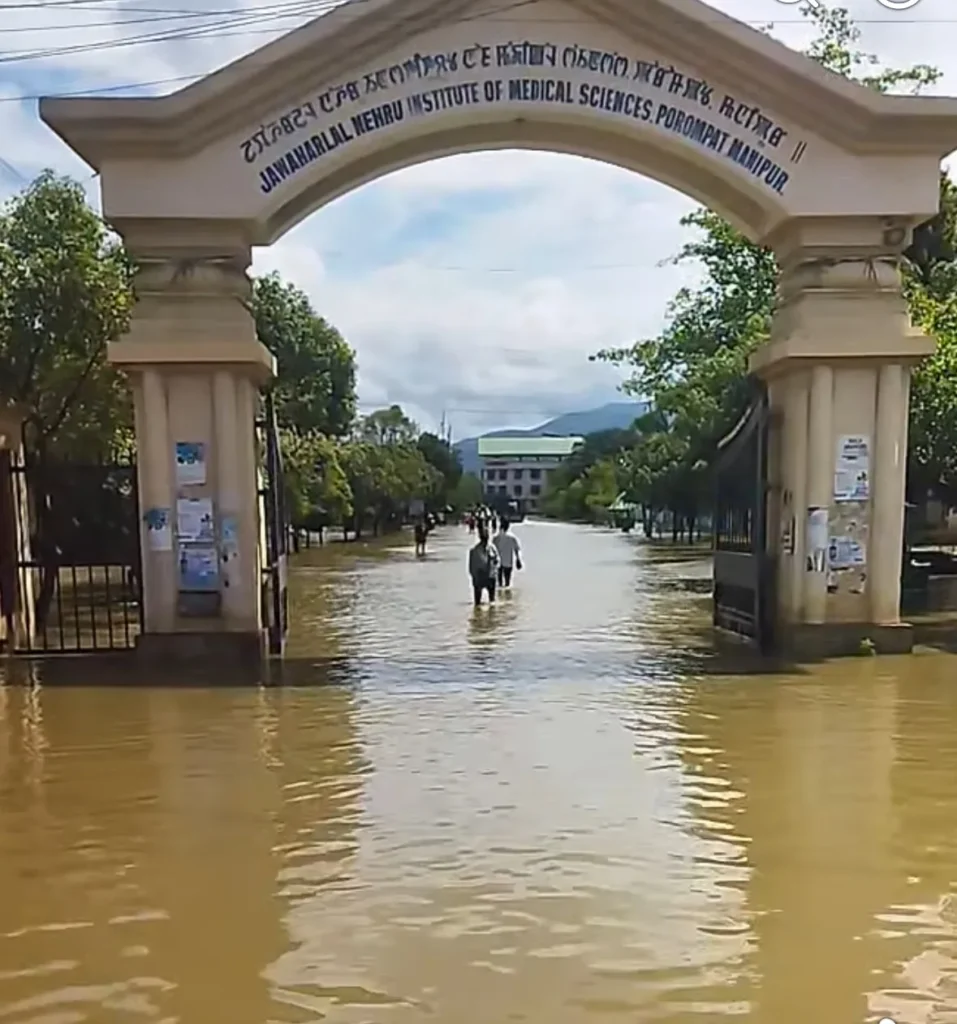
The worsening flash flood crisis in Manipur has forced the emergency evacuation of patients from the state’s premier government facility, the Jawaharlal Nehru Institute of Medical Sciences (JNIMS), Imphal. Rising water levels within and around the hospital complex left authorities with no choice but to order an immediate clearance of wards.
No New Admissions Until Further Notice
In an official statement, JNIMS said, “In the interest of patient safety, all current inpatients are to be evacuated with immediate effect. Additionally, no new admissions will be accepted until further notice.” The order was signed by Medical Superintendent Lokeshwar Singh with approval from higher authorities.
Flood Triggered by Iril River Breach
The flash floods followed continuous torrential rainfall, which caused the Iril River to breach its banks at Kshetri Awang Leikai in Imphal East on Monday morning. Over 5,000 households have been inundated, while large stretches of farmland in Imphal East and Thoubal districts have been destroyed. Landslides and road closures have further hampered rescue and relief operations.
Weather Outlook Adds to Concerns
The India Meteorological Department (IMD) has predicted light to moderate rainfall with thunderstorms across the Northeast, including Assam, Meghalaya, Nagaland, Manipur, Mizoram, and Tripura, until September 21. Authorities fear further rainfall could worsen the already dire flood situation.
NMC Directs Deployment of PG Medicos
Meanwhile, the Postgraduate Medical Education Board (PGMEB) of the National Medical Commission (NMC) has directed that PG medicos under the District Residency Programme (DRP) be deployed to flood- and disaster-affected regions in northern states and UTs. The Commission clarified that such deployment will count towards their residency training.
Relief Efforts Underway
Emergency services and state disaster management teams are working round the clock to evacuate stranded residents and ensure medical care. The flooding has highlighted the fragility of healthcare infrastructure during natural disasters, with JNIMS’ closure underlining the scale of disruption caused by the calamity.